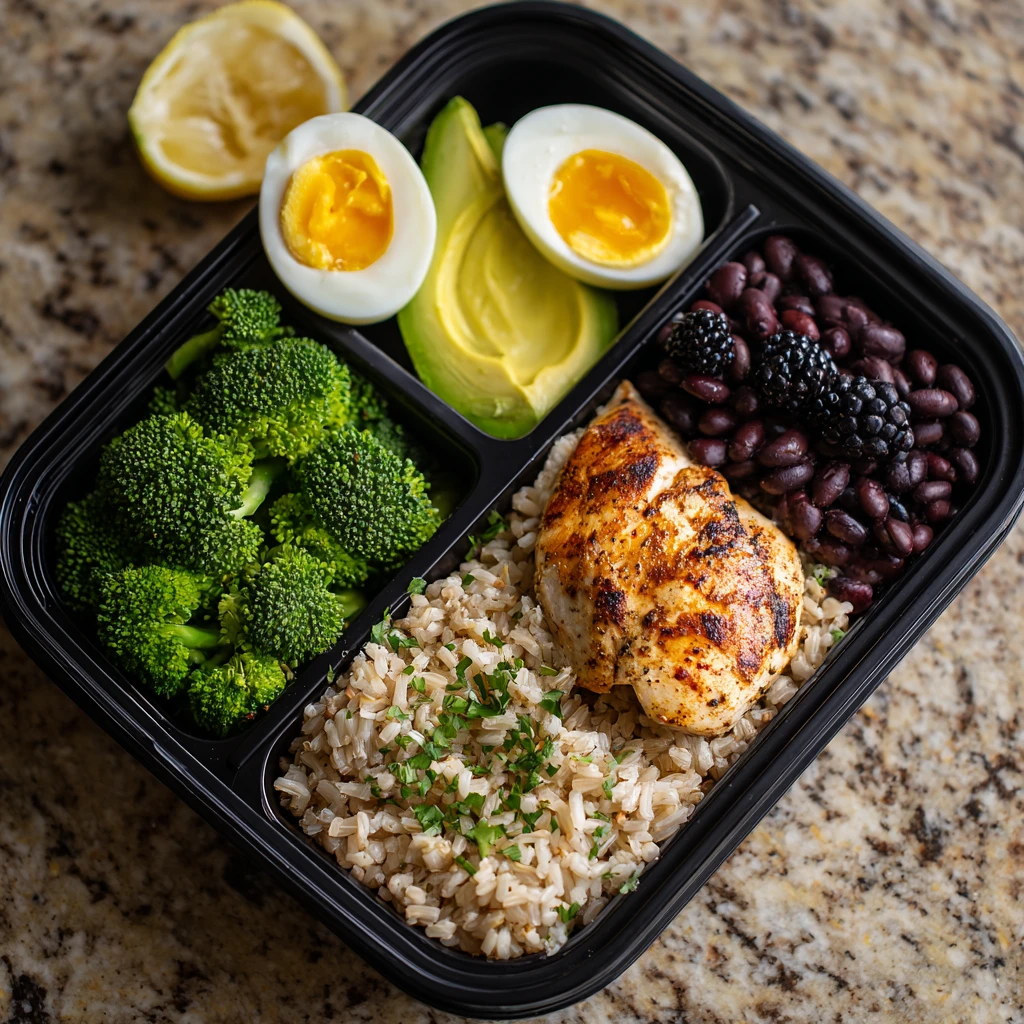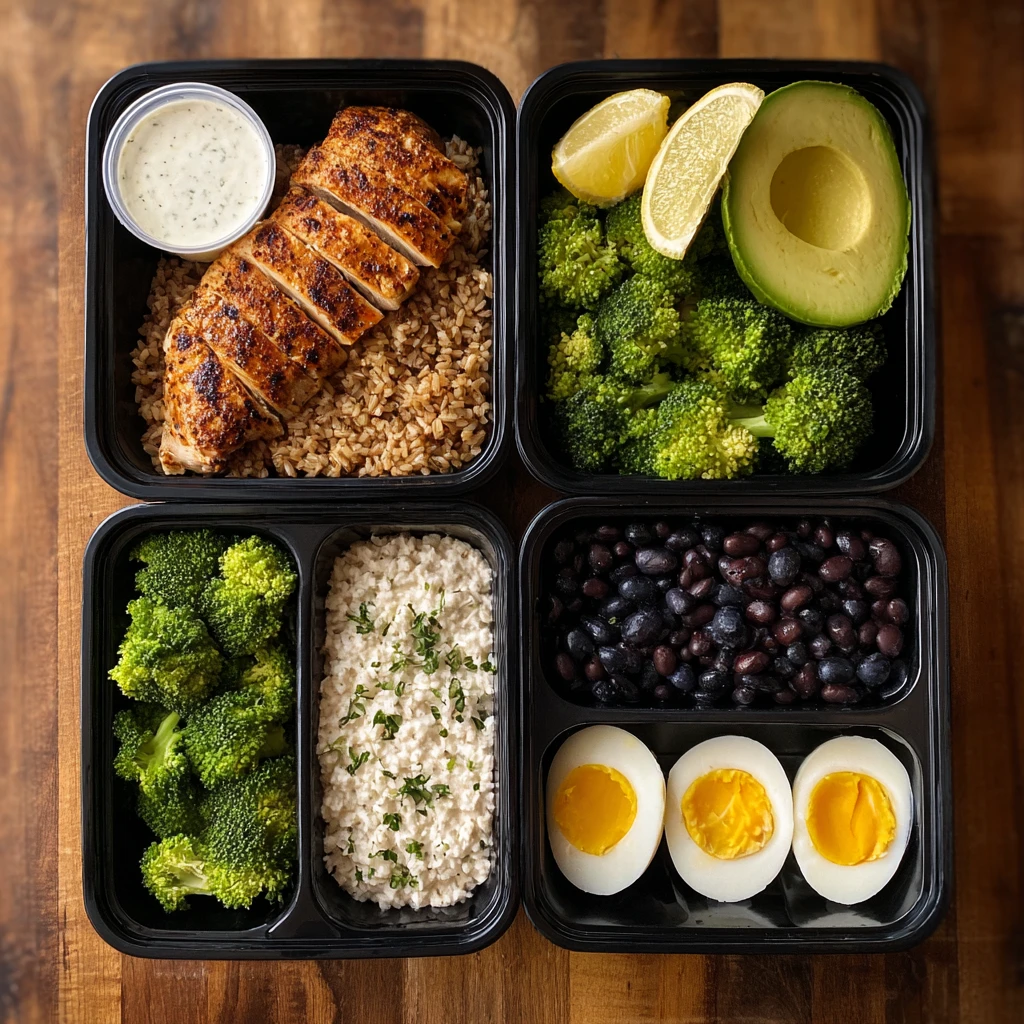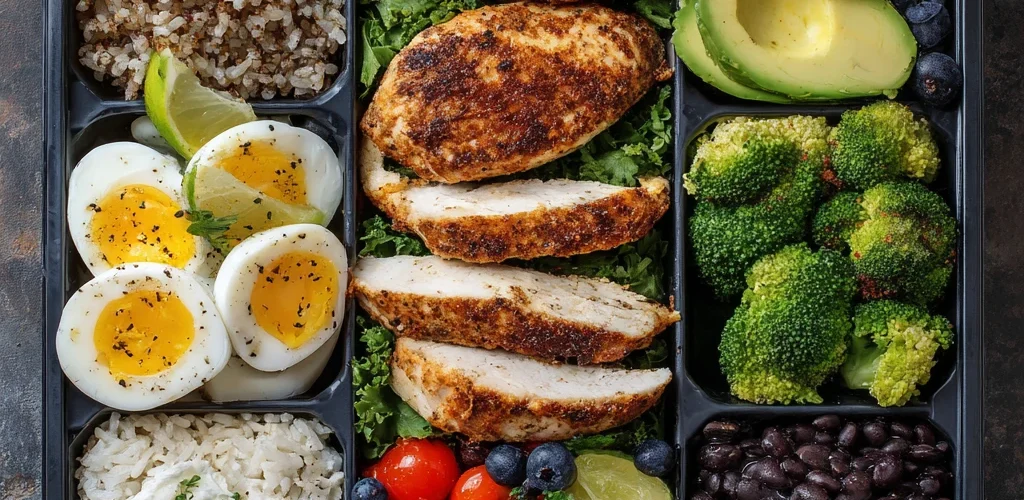Top 10 Meal Prep Staples to Always Have
Meal prepping is a fantastic way to save time, eat healthier, and stay on track with your dietary goals. But successful meal prepping hinges on having the right ingredients readily available. This article will guide you through the top 10 meal prep staples you should always keep stocked in your kitchen. Having these essentials on hand will transform your meal prepping experience from a chore into a seamless and enjoyable process.

Section 1: The Importance of Having Meal Prep Staples
Meal prepping isn’t just about cooking a large batch of food on a Sunday afternoon. It’s about creating a sustainable lifestyle that prioritizes healthy eating and efficient time management. Having a well-stocked pantry and refrigerator with essential meal prep ingredients is crucial for several reasons:
- Saves Time: When you have the basics available, you can quickly whip up meals without needing to run to the grocery store every day.
- Promotes Healthy Eating: Having healthy options readily available makes it easier to make nutritious choices and avoid unhealthy impulse decisions.
- Reduces Food Waste: Planning your meals around staples helps you use ingredients more efficiently, minimizing waste.
- Enhances Creativity: With a foundation of versatile staples, you can experiment with different recipes and flavor combinations.
- Reduces Stress: Knowing you have everything you need to prepare healthy meals reduces the stress associated with last-minute meal planning.
By focusing on stocking up on these essential ingredients, you’ll be well on your way to reaping the many benefits of meal prepping.
Section 2: The Top 10 Meal Prep Staples
Here are the top 10 meal prep staples that will form the foundation of your meal prepping strategy:
1. Lean Protein: Chicken Breast, Turkey, Fish, or Tofu
Lean protein is the cornerstone of many healthy meals. Chicken breast is incredibly versatile and can be baked, grilled, shredded, or diced. Turkey offers a leaner alternative, while fish like salmon and tilapia provide essential omega-3 fatty acids. For vegetarian and vegan options, tofu is an excellent source of protein that absorbs flavors well.
- Why it's a staple: Essential for muscle building, satiety, and overall health.
- How to prep: Cook a large batch on Sunday and store in individual containers. Season with herbs and spices for variety.
- Tips & Tricks: Marinate your protein for enhanced flavor and tenderness. Use an instant-read thermometer to ensure proper cooking.
2. Complex Carbohydrates: Brown Rice, Quinoa, Sweet Potatoes
Complex carbohydrates provide sustained energy and are packed with fiber. Brown rice and quinoa are excellent whole-grain options that can be easily cooked in bulk. Sweet potatoes offer a slightly sweeter flavor profile and are rich in vitamins and antioxidants.
- Why it's a staple: Provides sustained energy, fiber, and essential nutrients.
- How to prep: Cook in large batches using a rice cooker or on the stovetop. Roast sweet potatoes whole or diced.
- Tips & Tricks: Add herbs or spices to the cooking water for extra flavor. Store cooked grains and sweet potatoes separately to maintain texture.
3. Versatile Vegetables: Broccoli, Spinach, Bell Peppers
Vegetables are essential for vitamins, minerals, and fiber. Broccoli is a nutrient-dense cruciferous vegetable that can be steamed, roasted, or added to stir-fries. Spinach is a leafy green packed with vitamins and antioxidants, perfect for salads, smoothies, or sautéing. Bell peppers add color, sweetness, and crunch to various dishes.
- Why it's a staple: Provides essential vitamins, minerals, and fiber.
- How to prep: Wash and chop vegetables ahead of time. Roast broccoli and bell peppers for added flavor.
- Tips & Tricks: Store leafy greens in a container lined with paper towels to absorb excess moisture. Use different colored bell peppers for visual appeal.
4. Legumes: Beans and Lentils
Legumes are a fantastic source of plant-based protein and fiber, making them a filling and nutritious addition to your meal prep. Beans like black beans, chickpeas, and kidney beans are incredibly versatile and can be used in salads, soups, stews, and dips. Lentils are quick-cooking and come in various types, each with its unique flavor and texture.
- Why it's a staple: Excellent source of plant-based protein and fiber.
- How to prep: Cook beans from dry or use canned beans (rinse well). Cook lentils according to package directions.
- Tips & Tricks: Soak dry beans overnight to reduce cooking time. Add spices like cumin, coriander, and chili powder for flavor.
5. Healthy Fats: Avocado, Nuts, Seeds
Healthy fats are crucial for overall health and satiety. Avocado provides monounsaturated fats, fiber, and vitamins. Nuts like almonds, walnuts, and cashews offer a good source of protein and healthy fats. Seeds such as chia seeds, flax seeds, and pumpkin seeds add texture and nutrients to your meals.
- Why it's a staple: Provides essential fatty acids, supports brain health, and promotes satiety.
- How to prep: Slice or mash avocado just before serving to prevent browning. Portion nuts and seeds into small bags or containers.
- Tips & Tricks: Store avocados in the refrigerator to slow down ripening. Toast nuts and seeds for enhanced flavor.
6. Eggs
Eggs are a powerhouse of protein and essential nutrients. They’re incredibly versatile and can be hard-boiled, scrambled, or used in omelets and frittatas. Eggs are also relatively inexpensive, making them an economical meal prep staple.
- Why it's a staple: Excellent source of protein and essential nutrients.
- How to prep: Hard-boil eggs and store in the refrigerator. Prepare scrambled eggs in bulk and store in individual containers.
- Tips & Tricks: To easily peel hard-boiled eggs, add a teaspoon of baking soda to the cooking water.
7. Yogurt (Greek or Plain)
Greek yogurt or plain yogurt are excellent sources of protein and probiotics. They can be used in smoothies, parfaits, dips, or as a healthy topping for meals. Choose plain yogurt to avoid added sugars and artificial flavors.
- Why it's a staple: Provides protein, probiotics, and calcium.
- How to prep: Portion yogurt into individual containers for easy grab-and-go snacks.
- Tips & Tricks: Add fruit, granola, or nuts to yogurt for a balanced and delicious meal or snack.
8. Whole Grain Bread or Wraps
Whole grain bread or wraps are convenient options for creating quick and healthy meals. They can be used for sandwiches, wraps, or toast. Choose whole grain varieties for added fiber and nutrients.
- Why it's a staple: Provides carbohydrates and fiber.
- How to prep: Store bread and wraps in a cool, dry place.
- Tips & Tricks: Toast bread or wraps for added texture and flavor. Use whole grain tortillas for healthier wraps.
9. Sauces and Dressings (Homemade or Low-Sugar)
Sauces and dressings can add flavor and variety to your meal prep. Opt for homemade options to control the ingredients and avoid added sugars and unhealthy fats. If using store-bought options, choose low-sugar and low-sodium varieties. Some great options include olive oil, vinegar, lemon juice, and homemade vinaigrettes.
- Why it's a staple: Adds flavor and variety to meals.
- How to prep: Make homemade sauces and dressings in bulk and store in airtight containers.
- Tips & Tricks: Experiment with different herbs and spices to create unique flavor combinations.
10. Fruits (Berries, Apples, Bananas)
Fruits are a natural source of vitamins, minerals, and antioxidants. Berries like blueberries, strawberries, and raspberries are packed with antioxidants and fiber. Apples and bananas are convenient grab-and-go options that provide potassium and fiber.
- Why it's a staple: Provides vitamins, minerals, and antioxidants.
- How to prep: Wash and portion fruits into individual containers.
- Tips & Tricks: Store berries in the refrigerator to prolong freshness. Add fruits to smoothies, yogurt, or oatmeal.
Section 3: Meal Prep Recipes Using These Staples
Here are a few meal prep recipe ideas using these staples:
- Chicken and Veggie Bowls: Combine grilled chicken breast, brown rice, roasted broccoli, and bell peppers. Top with a homemade vinaigrette.
- Quinoa Salad with Black Beans and Avocado: Mix cooked quinoa with black beans, diced avocado, chopped bell peppers, and a squeeze of lime juice.
- Tofu Scramble with Spinach: Sauté crumbled tofu with spinach, onions, and garlic. Serve with whole-grain toast.
- Lentil Soup: Combine lentils, diced vegetables, and vegetable broth in a slow cooker or on the stovetop. Season with herbs and spices.
- Yogurt Parfaits: Layer Greek yogurt with berries, granola, and a drizzle of honey.
- Hard-Boiled Egg and Avocado Toast: Top whole-grain toast with mashed avocado and sliced hard-boiled eggs. Season with salt and pepper.
These are just a few examples to get you started. The possibilities are endless when you have these essential meal prep staples on hand!
Section 4: Tips for Successful Meal Prepping
To make meal prepping a sustainable part of your lifestyle, consider these tips:
- Plan Your Meals in Advance: Spend some time each week planning your meals for the upcoming week. This will help you create a grocery list and ensure you have all the ingredients you need.
- Shop Smart: Stick to your grocery list to avoid impulse purchases. Focus on buying high-quality ingredients that you enjoy eating.
- Prepare in Bulk: Cook large batches of your staples on the weekend or whenever you have free time. This will save you time during the week.
- Use the Right Containers: Invest in high-quality, airtight containers to keep your meals fresh.
- Store Food Properly: Store cooked food in the refrigerator at 40°F (4°C) or below. Use prepared meals within 3-4 days for optimal freshness and safety.
- Don't Be Afraid to Experiment: Try new recipes and flavor combinations to keep your meal prep interesting.
Section 5: Addressing Common Meal Prep Concerns
Meal prepping can seem daunting at first, but with the right approach, it can become a valuable habit. Here are some common concerns and solutions:

- "I don't have time." Start small by prepping just a few meals each week. Even preparing one or two components, like grains or protein, can make a big difference.
- "My food gets boring." Vary your recipes and flavor combinations. Experiment with different herbs, spices, and sauces to keep things interesting.
- "I don't know what to cook." Start with simple recipes that you enjoy. Use online resources and cookbooks for inspiration.
- "I'm worried about food safety." Follow proper food storage guidelines to ensure your meals are safe to eat. Cool cooked food quickly and store it in the refrigerator at 40°F (4°C) or below.
FAQ Section:
Q: What are the best containers for meal prepping?
A: Glass or BPA-free plastic containers with airtight lids are ideal for meal prepping. Glass containers are more durable and don’t retain odors or stains, while plastic containers are lighter and more affordable.
Q: How long does meal prep last in the fridge?
A: Properly stored meal prepped food will typically last for 3-4 days in the refrigerator. After that, the quality and safety may decline.
Q: What is the best day to meal prep?
A: Many people find that Sundays are a convenient day to meal prep, but you can choose any day that works best for your schedule.
Q: How do you keep meal prep from getting boring?
A: Vary your recipes, experiment with different flavors and seasonings, and try new ingredients. Don’t be afraid to get creative!
Q: Is it cheaper to meal prep?
A: Yes, meal prepping can save you money by reducing food waste and preventing impulse purchases of unhealthy takeout options.
Q: What should I eat every day to stay healthy?
A: Focus on a balanced diet that includes lean protein, complex carbohydrates, healthy fats, and plenty of fruits and vegetables. The specific amounts will vary depending on your individual needs and goals.



